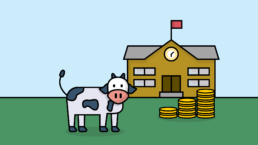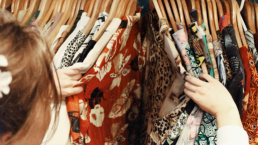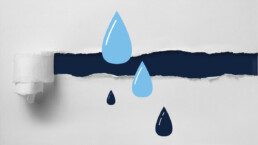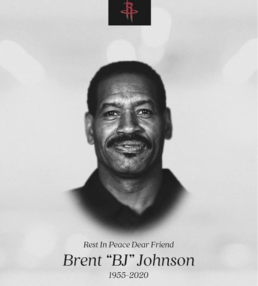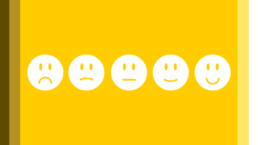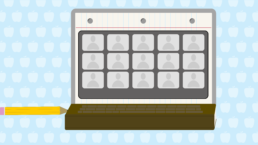Cows, Colleges, and Contentment… and Capitalism
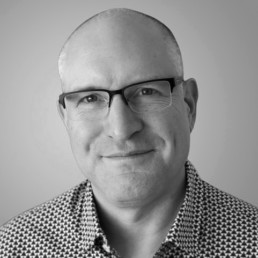
I have always been intrigued by the concept and study of contentment and happiness. Northfield, Minnesota’s slogan of “Cows, Colleges and Contentment” lured me in when I was looking at undergraduate schools – it was a sunny day at Carleton College when I visited in the summer of 1982. I am pretty sure that under my college yearbook picture (book was recycled in our last “lighten the load” purge before we recently moved, so I can’t verify), my stated future goal in life was “contentment.” In our divisive times, it feels like we all might benefit from added scientific wisdom on the topic…
A recent article, “Things That Will Make You Happier Than Winning the Lottery,” piqued my interest. In it, Harvard Professor Sanjiv Chopra explores the research and findings. It turns out that money truly does not buy happiness – people who win the lottery lose the excitement soon after: “The research shows that at the end of a year, they’re back to baseline. Some are less happy,” Chopra says.
Chopra also shares Three Keys to being happier people: Purpose (Dharma), Giving, and Gratitude. The findings resonate with me and feel consistent with the hopeful themes of the season!
It is interesting, then, how important having access to the right amount of capital enables Chopra’s three keys. It is difficult to serve your purpose, give, or express appropriate gratitude if you don’t have the funds to do the work.
ESG-driven impact investors attempt to strike a similar balance. Creating inclusive, socially impactful wealth for all people is not possible without the wherewithal to take meaningful steps forward.
The good news is that the purpose-based recipe is working for a new brand of responsible capitalism. The need for evolved ESG-driven models continues to grow, supporting companies actively doing the important work of our time: purposefully helping solve the climate emergency, giving alternative buckets of capital that support entrepreneurs in disadvantaged communities, and expressing gratitude through paying fair and equitable wages.
At Carleton, I was privileged to get to know Paul Wellstone in a unique way. Before he served as the Senator from Minnesota, he taught Political Science at Carleton. He was a huge sports fan and former college athlete. We would share a beer (or 2) at Sayles Hill after basketball games – it was a different time and our interpretation post-game carbo loading seemed encouraged… He would always have some interesting perspectives on our strategy and approach. He usually thought we could pressure the ball more on defense and rebound with more effort (he was right – you can always play harder).
As Senator, Wellstone became famous as a voice for communities that had not been well served by the status quo. He was known for the maxim, “We all do better when we all do better.” He believed capitalism had a deep responsibility to be more inclusive while promoting innovation and allowing all entrepreneurs the opportunity to thrive in its competitive marketplace.
The late Senator would approve of the ESG-driven impact investing movement. Howard Buffett, Warren’s grandson, recently tweeted about how the ESG-driven movement needs to be intentional about its growth, and strive for more uniform measurements that all can understand.
Young people are driving the change. Students are demanding change. One of the interesting things about the juxtaposition of colleges and capitalism is that the wealth gap we see in individuals is exaggerated in the university setting between the wealthy and less advantaged schools. For the more elite schools, college endowments have grown with strong returns. The less advantaged schools are in danger of shutting down. Students are seeking transparency and demanding more alignment with the Environmental, Social and Governmental goals of the ESG movement. Chopra’s own school has bowed under student pressure and has announced they will be changing the way they measure returns in a more inclusive way – the good news for Harvard is that ESG-driven business is growing and showing excellent returns.
For me, as I have matured, I know a more inclusive capitalism will lead to a better, more contented world. We need all the help we can get on that front. And, from one of the learnings from our sports world experience, we can’t let perfect be the enemy of the good as we take direct action. Significant capital and innovative models are leading the change, and it is OK to take one step at a time.
I am grateful that we still have some time, however limited, to give our duty some hope.
Craig Jonas is the CEO and founder of CoPeace. As a forward-thinking holding company, CoPeace is building a portfolio of carefully selected for-profit companies with measurable social and environmental impact. To learn more about impact investing, check out CoPeace’s Intro to Impact Investing.
How We Can Impact the World with Repurposed Clothing
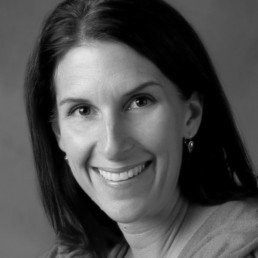
It’s probably fair to say that the past 16 months have changed our lives forever in so many ways. Those of us who were fortunate enough to (so far) survive a global pandemic likely find ourselves with some new perspectives on life and how we live it each day. How do I want to spend my time and with whom? Is my work-life balance sufficient? What do I want to spend my money on? How can I make a positive difference in the world? What should I wear?
Wait. You’re probably wondering about that last one. It seems superficial and shallow, right? Uh…no. Let’s explore what we already know about the garment industry and, more importantly, the one proven way to dig it out of the mud.
The Garment Industry and Mass Pollution
The garment industry is one of the most polluting in the world. According to the Ellen MacArthur Foundation, the fashion industry alone uses 93 billion cubic meters of water every year – enough to meet the consumption needs of 5 million people. Further, it dumps 500,000 tons of plastic microfibers into the ocean annually, spreading into the food chain and unable to be extracted. McKinsey & Company revealed that the industry accounts for 4% of greenhouse gas emissions, with nearly 70% coming from production processes.
Then there’s the volume. The industry’s “fast fashion” operating model dramatically exacerbates the problem with a constant stream of design, production, and distribution. No longer are the days of four fashion seasons, but instead, many retailers stock their shelves with new lines every week with 52 “micro seasons” per year. In 2000, 50 billion new garments were made; nearly 20 years later, that figure has doubled, according to the Ellen MacArthur Foundation. This frenzied pace has also accelerated consumption: the average person today buys 60% more clothing than in 2000.
The Dark Secret of Clothing Production: Worker Exploitation
The volume leads to perhaps the darkest secret of the garment industry. Fast fashion companies are forced to find the cheapest labor available, and worker exploitation is rampant. Garment workers are often required to work 16-hour days, 7 days/week for poverty pay. Child labor is a common practice, and firings occur when worker unions initiate labor rights.
Sending Designer Labels Into Landfills
The final chapter of this linear economy is the endpoint of all those garments – they most often end up in landfills across the globe. A small percentage are donated to various charities, but only 10% find a new home through this pipeline, and the remaining is discarded. And according to ThredUp, 9 billion pounds of clothing are hardly worn or are just sitting idle in the consumers’ closets.
Bottom line: We must rethink how we consume and discard clothing.
Repurposing Clothing: Innovation For Good
One silver lining of the past year is that many people are already rethinking consumption and how they discard clothing. For one, we simply bought less clothing while in quarantine. This article from The New York Times references “Sweatpants Forever” and the unraveling of the fashion industry when meetings and working in offices moved virtual. Many of us also realized that we just don’t need excessive clothing to lead productive, fulfilling lives post-pandemic. Living with less not only supports our planet and society, but it provides more space – physically and mentally – to devote our time, energy, and money to elements that add true value to our lives.
Some of the companies making strides in sustainable materials include Everlane, Reformation, Patagonia, Levi’s, Tentree, and Rothy’s. You don’t have to sacrifice the brand name when purchasing an eco-friendly product.
The Social Responsibility of Discarding Used Clothing
So, we’ve identified progress in garment production. Now let’s discuss (and celebrate) a real solution to responsibly discard garments that made huge strides over the past year – a circular business model known as thrifting, resale, re-commerce, or consignment. While consumers bought significantly less apparel, 33 million consumers bought secondhand apparel for the first time in 2020, and 76% of those plan to increase this practice over the next 5 years – YEA!
Shopping Resale as a Sustainability Initiative
Shopping resale is like giving Mother Earth a huge hug in a beautiful cashmere sweater (a thrifted one, of course). An item bought secondhand displaces 17.4 pounds (7.89 kilograms) of CO2 emissions, reducing its carbon footprint by 82% on average. Resale uses fewer than 77 gallons of water (1.2 gal vs. 78.5 gal) and 34 kiloWatts of energy (4.8 kWh vs. 38.8 kWh) compared to new items on average.
Thrifting dramatically reduces the human cost of the clothes on our backs by reducing the demand for fast fashion production. As sustainability advocates, we should also rejoice that it reduces energy consumption, air pollution, prevents landfills from filling with perfectly good clothing, and keeps our oceans cleaner.
Younger generations have already caught on. Compared to Boomers, Gen-Z is 33% more likely to own re-sold clothing. Over 40% of Gen-Z and Millennials have shopped secondhand apparel in the past year. Despite the “old dog, new tricks” saying, we can learn, adapt, and join this movement with our younger communities.
Now, I know what you’re thinking, “Thrifting is yucky, garments are outdated, and designer labels are hard to find.” Allow me to introduce you to the new world of resale! This isn’t your grandma’s thrift shop.
Whether you’re a designer-brand fashionista, minimalist with an eye for sustainable materials, an offender of the repeated “groutfit” (that’s the “grey outfit” my husband proudly wears 6 or 7 days a week), or just someone who needs a new pair of jeans…there is a re-commerce site or store for you. Tradesy, ThredUp, PoshMark, The RealReal, and Kidizen are just a few online favorites. Brands like Patagonia and Eileen Fisher have their own resale shops, and your local community likely has some hidden brick-and-mortar gems.
And before you ask, returns are accepted and often free. Some resale sites offer free “clean out your closet” kits – just mail in your old duds and get credit to spend. ThredUp offers e-gift cards to favorite sustainable brands with a 15% bonus for all clothes they accept from your closet. You can even find some brand-new items (with tags still attached).
When practicing sustainability, it’s time to think beyond climate change initiatives, alternative energy, recycling, and organic farming. It’s fascinating to think about the positive impact of advocating for thoughtful clothing and garment production, consumption, and disposal. Every one of us can transform our future when making current-day decisions. I challenge you to reconsider how, where, and why you shop for the clothing for your family and try your next shopping trip at a resale store. Upcycle the clothes you don’t currently wear to a resale site. And spread the word. Together, we can make a difference.
Meg Masten is the Chief Relationship Officer at CoPeace. As a forward-thinking holding company, CoPeace is building a portfolio of carefully selected for-profit companies with measurable social and environmental impact. To learn more about impact investing, check out CoPeace’s Intro to Impact Investing.
Investing: What’s Holding You Back?

If you’ve never dabbled in the world of investing, even the thought of talking about money, financial returns, and building wealth can be intimidating.
For many people, investing is a foreign concept and one that might even bring doubt and uncertainty. From an early age, we’ve been taught to “save money” whenever possible. Unfortunately, all too often, investment strategies weren’t part of the conversation.
What if there were relatively simple solutions to help us ease into the investment world? Let’s start by asking ourselves, “What’s holding me back?”
I don’t know enough about investing.
The vast majority of us can relate to this. We didn’t study finance or economics in school. We’re not financial advisors, and we’ve never worked with one. Perhaps our parents or partners have always handled the finances, so we’re not in the trenches in our own budgets. Whatever your situation, it’s never too late to empower your inner investor by educating yourself. Start simple, do basic research. There’s a world of information available on the internet; start by mining through well-known and trusted websites. Talk to people you trust who have investment experience. Formulate a list of questions and seek answers. Consult with a professional advisor.
I can’t afford it.
There was a time in history when this might have been true — when only high-net-worth individuals could get into the investment game. This is no longer the case. There are now a variety of investment vehicles available, including crowdfunding and beginner investment websites. The entry point for investments can be as low as a few dollars!
It’s too risky… I’m scared to lose money.
Talking with a financial advisor will greatly benefit anyone new to investing. During this meeting, your trusted partner will talk with you about risk — they will assess your current financial situation including income, assets, age, and also get a feel for how much risk you are willing/want to take. It’s different for everyone, and you can set yourself up for success with the right plan based on your risk assessment. After you complete a professional risk assessment, you’ll have a much better idea of where to invest and how much money you should invest.
Investment options don’t align with my values.
Investment opportunities have changed for the better. We’re no longer limited to funds that support fossil fuels, tobacco, guns, and companies with unfair labor or trade practices. Driven by factors like sustainability and positive societal impact, mission-based investors can select ESG (Environmental, Social, Governance) impact investing — which allows everyone to put their money toward causes they care about, while still earning financial returns.
Don’t let any of these hesitations prevent you from taking the leap into the investment world! As you can see, there are options for everyone.
Meg Masten is the Chief Relationship Officer at CoPeace. As a forward-thinking holding company, CoPeace is building a portfolio of carefully selected for-profit companies with measurable social and environmental impact. To learn more about impact investing, check out CoPeace’s Intro to Impact Investing.
2020: Cloudy with a Chance of Thundersnow… and a Twinkle of Hope
Until you’ve experienced it, you might not believe that thundersnow exists. When you put these two words together, they sound like a make-believe fairy tale nightmare or a phony phrase created for children’s books.
News flash: Thundersnow is real. And it’s perhaps a cruel metaphor for 2020.
Is it thundersnow, or is it COVID?
During a thundersnow storm, snowfall intensity severely limits visibility, winds atof or above tropical storm force are frequent, frostbite is nearly instant if you’re exposed to the elements, and the positive polarity is associated with greater destructive potential than lightning. So… not only is it something you’d never expect to happen, but you have to stay inside to stay safe. It’s kinda like living through COVID.
If there’s one takeaway from a year that seemed so promising when the ball dropped in Times Square on December 31st, ringing in a decade that we only dreamed about in sci-fi novels — it’s that we are resilient. We harnessed the concept of change agility, learned to be nimble in our (personal and business) goals and actions, and remembered to acknowledge gratitude and hope in a more authentic way than ever before.
Our wish for you
If you’ve experienced personal loss, job loss, illness, or hardship of any kind this year, we’re holding you in our hearts. We wish nothing but strength, healing, and abundance for you in the New Year.
What’s 2021 look like?
Right now, we’re faced with a future that seems to be filled with more questions than answers. We ask ourselves questions like, “Can business really be a force for good?” and “Is it possible to focus on mission-based work and still make a profit?” Challenging the status quo is healthy — after all, our children’s future depends on the decisions we make right now.
Climate change? It’s real. Social inequality? The gap is widening between the rich and the poor. A massive shift in the way companies do business? It’s happening. Goodbye offices, hello Zoom, and welcome to a new trend of outsourcing and utilizing contract work — companies are bringing in experts on a project basis rather than hiring a more robust full-time staff. This strategic move saves businesses money on benefits, training, and supplies. Additionally, it allows for a more flexible work schedule and focuses on areas that a smaller company may need to utilize on an intermittent — or temporary — basis. With the rise of a “gig economy,” or a free market system of employment, this strategy is also appealing and beneficial for contractors based on short-term and temporary contract work.
There are a lot of things that have gone right this year; let’s not forget that. And as we straddle the line of empathy and ambition, we’re here to be the light at the end of the tunnel of 2020. All of the trends we see as this year comes to an end drive our strategic goals for 2021.
We believe in the twinkle of hope that the New Year brings. Onward!
Lindsay Hope is a copywriter and marketing strategist with CoPeace. As a forward-thinking holding company, CoPeace is building a portfolio of carefully selected for-profit companies with measurable social and environmental impact. To learn more about impact investing, check out CoPeace’s Intro to Impact Investing.
Giving Gifts with Purpose

Happy Holidays!
December is a special month, and we have so many holidays to celebrate in December. We have Hannukah, Christmas, and Kwanzaa. All these festivals believe in peace, joy, and unity all over the world. With all the craziness going on in the world currently, these holidays are awaited so eagerly.
With holidays comes the gift-giving. We need to be mindful of giving gifts to our loved ones. Sometimes, the gifts we give are returned or not liked. A unique and different way of gifting is financial gift-giving, which includes contributing to college costs, giving charities, cash, stock and impact investing.
Gift as Stock
Many parents and grandparents like the idea of ushering their children or grandchildren down the path of financial literacy and financial responsibility. Giving kids a financial gift starts the conversation of how much to spend on something for myself, how much to save toward a major goal, and how much to share with others in need. You can give by purchasing stocks, bonds, mutual funds, or ETFs as a holiday gift to children. It helps if the stocks are in companies, such as Apple, Disney, or Facebook, that they know, understand, and get excited about. Stockpile is one such company which allows you to buy gift cards that recipients can redeem for fractional shares of stock in over 1,000 companies and ETFs.
College Savings
If you have younger children on your list this year, but you still want to give the gift of education, look into opening a 529 plan or contributing to an existing account. These are tax-advantaged accounts specifically designed to help families save for education costs.
Student loan debt
While saving for college can make a great gift, paying off student loan debt is also a worthwhile approach to holiday giving. There is company called Gift of College which has its gift cards available to make the payments for the student loans.
Job skills
Help your friends and family sharpen their skills or expand their knowledge base this holiday season. You never know; it could lead to a promotion or a better paying job in the new year. Online learning websites like Udemy, Coursera, and LinkedIn Learning provide gift certificates to offer someone to take courses.
Charity as a gift
The season of giving is upon us, and this year especially, the need is great. Consider giving a donation or making a charity as a gift this year — it’s a great way to give back to others. It also demonstrates how well we know our loved ones by supporting the causes they care about. In addition to charitable giving being a rewarding experience, it comes with tax benefits.
Impact Investing
If you’re currently assessing your budget and have extra dollars you’d like to spend this year investing in your family’s future…Or if you’re looking for a fresh, new idea for how to spend your EOY budget allocation for investments…
Right now *might* just be the perfect opportunity for you to invest in CoPeace before the end of the year. Investing now is an opportunity to use your dollars for good — by supporting causes you care about and earning financial returns.
I believe, there are so many ways to make gift-giving in a real sense meaningful and purposeful.
Aarti Karnik is the Director of Web Development with CoPeace. As a forward-thinking holding company, CoPeace is building a portfolio of carefully selected for-profit companies with measurable social and environmental impact. To learn more about impact investing, check out CoPeace’s Intro to Impact Investing.
Tears for Tears

The tears in our cultural fabric are deep. We are torn and divided. We have little common ground. Do we give up? Eat more cheese? Stay on the couch? Invest in Chevron?
The challenges in front of us are real and consequential. The U.S. election season highlighted the current schism in our world and exposed the inequalities in front of us all:
- There are no easy solutions for the CoVID-19 pandemic. People are sick and people are dying. My 26-year-old son spent a night in the ER and my sister-in-law’s father died last week. The virus is scary and real.
- The struggle for racial justice has been deeply exposed through our current divisions.
- The climate crisis does not give us much time to get our act together.
These bullets are overwhelming. The key is to work to find possible solutions and create a plan of action, and then act. We can solve problems by attacking them head on, incrementally.
The ancient Chinese philosopher Lao Tzu taught that there is your way, my way, and the way of truth. We need to separate people from the problem and focus on the common ground that is the truth:
- I know it is obvious, but science and data must lead the solutions for the pandemic. My wife is a nurse and she is encountering CoVID-19 patients. Because she and the nurse-doctor team take it seriously, wear their PPE, wash their hands, and keep physically as distant as possible (not that easy when giving shots, etc.), nobody on her team has contracted the virus. Business and school can be conducted if it is done very carefully. Follow the data to open safely.
- We all need to recognize the racist past of our world and be honest about how it has created systems of inequality. We share this past. Actively creating new systems, and businesses, that change the access and opportunities for disadvantaged communities provides multiple pathways to change. Diversity does make us stronger. Fixing would help (here is one proposal driven by data). Support companies like FreeCap.
- The climate crisis is real. While the clock is ticking, there are solutions that are creating change and opportunity. It ends up being a good business decision to care about the long-term future of our world (I know I say that often). Watch David Attenborough: A Life On Our Planet. Support companies like Uncharted Power.
It is a difficult time to write a blog – to recognize the real challenges, while simultaneously seeking common ground – and authentically demonstrating optimism for a brighter future.
But we do share so much as one human race. We can be together. We do have the agency to affect positive change. Our common bond is a better collective future. Drink more water. Move with purpose. Invest in impact. Invest in Change Finance.
Allow tears of joy to flow and to start healing the deep tears. Seek solutions to the problems and find common ground to move forward. I am.
Craig Jonas is the CEO and founder of CoPeace. As a forward-thinking holding company, CoPeace is building a portfolio of carefully selected for-profit companies with measurable social and environmental impact. To learn more about impact investing, check out CoPeace’s Intro to Impact Investing.
Make a Difference Day
Saturday, Oct. 24, marks the 28th National Make a Difference Day, the largest national day of community service.
Here at CoPeace, it may truly be the reason we exist today. It’s when we individually reached a point in our careers, and focused on a greater cause, and committed to make an impact, that our impact-driven company, CoPeace, was born.
As we sit with our brothers and sisters from around the world in a pandemic these past seven months, we see homelessness, divisiveness, hunger and climate crisis all around us. It’s been the most dire of times for so many of us, I’m not sure if there has ever been a more needed time for community than now.
Making a difference can take many different forms. One can make a difference by checking in on the elderly, or collecting cans for a food pantry, or picking up litter. There are many volunteer opportunities and acts to help mitigate the planet’s bigger issues such as plastic waste, greenhouse gas emissions, and water scarcity.
The local chapters of United Way have done an incredible job within their local communities, mobilizing to different causes.
Even the smallest of efforts can change a community and subsequently the world.
The Aspen Strategy Group is leading an effort to establish a National Service. A non-political program to bring “community” back, front and center, providing jobs and assistance where it’s most needed. A program that could help working parents teach STEM to under-privileged communities and close the opportunity gap.
When I think of the power and intention of this day, I can’t help but think of my recently departed friend Brent Johnson. B.J. was a scout for the Houston Rockets and a pillar in the basketball industry.
B.J. had an infectious smile and made time for everyone around him. He was the ultimate giving person.
His impact was felt by all he touched. To aspiring basketball players, he encouraged them; to community members, he welcomed them and shared; to industry colleagues, he treated them with respect.
He made sure you knew that you were valued by him. His character was exemplary. All of his days on Earth were like how I lived my best day as a person.
You may know what I am talking about. That one day, when I was my absolute best as a human being, when I was able to put everything aside, and do something absolutely selfless. Something that afterwards I would literally glow, basking from it. That’s how B.J. was every day.
I think we all know someone like that. Someone that was or is such a special soul that makes everything around them better. We marvel at them and it motivates us to be better versions of ourselves.
Saturday, Oct. 24 is our opportunity to do as B.J. would do. An opportunity to be selfless and be our best versions of ourselves for National Make A Difference Day. Please join me!
Leigh Klein formerly worked as the Director of Sport Strategy at CoPeace. As a forward-thinking holding company, CoPeace is building a portfolio of carefully selected for-profit companies with measurable social and environmental impact. To learn more about impact investing, check out CoPeace’s Intro to Impact Investing.
Sharing Our Message on Positive Thinking Day

Last Sunday (Sept. 13) marked a day that deserves more attention – Positive Thinking Day. Though it is now behind us, we should still reflect on how we can attain a more positive mindset. A positive mindset is a powerful thing. With the right resources, team, and community, this evolves into something even more powerful – positive impact that can transform the world.
CoPeace is a company built on channeling the power of positive thinking into achieving positive impacts on our world. We continue to build an ecosystem of impactful companies providing innovative solutions to the climate crisis and ongoing social injustices. We are fortunate to have a network of like-minded, supportive investors and partners that believe in the CoPeace mission, and we are always looking to include more people in our community!
Positive energy breeds positive energy. As you reflect on this past Positive Thinking Day, how can you share your values within your community to help us all grow?
Jacob Miller is a financial analyst at CoPeace. As a forward-thinking holding company, CoPeace is building a portfolio of carefully selected for-profit companies with measurable social and environmental impact. To learn more about impact investing, check out CoPeace’s Intro to Impact Investing.
“Basic” Education

After changing from my sleep pants to my “work” sweatpants, and right before jumping on the first of what seems like an endless array of video meetings, I had some time to reflect on our recent household “emergency.” My daughter’s computer charger has stopped working.
I’ll spare you the boring details, but it took two very stressful days of watching the battery percentage helplessly drop before we were able to get a new charger. This was an emergency, since my daughter, like a large portion of the children around the world, is going to school remotely and a working computer is required for school education…a computer! Let that sink in.
School supplies used to be a notebook, a pencil, and a book (and an optional Transformers lunch box …if you were cool).
Through this pandemic we have seen a great push for social equality. It has been a problem for so many years and education sits right smack in its center of the issue. The access and quality of education are just a few of the issues that widen the divide in our society. Internet connectivity, a computer, and even electricity are luxuries a lot of us take for granted, and we only see their true value when they are suddenly gone. If you have kids, just trying shutting off your WiFi for five minutes and see your sweet child instantaneously morph into The Incredible Hulk!
As we try and plan for a better future on the other side, we cannot ignore the lessons we learn during the pandemic. We now know what the future will look like, we now know what the future will require from our children to be successful. So that is where we should invest our money.
We should invest in a future where each child has what they need to succeed. This way we not only become a more fair and just society, but we also become a more successful and prosperous society, where bright minds have the right platform to excel and ideas can flourish. This is not only the right thing to do socially, but the right thing to do financially!
At CoPeace we believe in investing in companies who create those platforms and the type of impact that changes generations. We do so, not by being psychic or pretending we know more than anyone else, but by taking note of the world around us and the direction it is heading toward.
Hanan Levin is a Senior Investment Advisor at CoPeace. As a forward-thinking holding company, CoPeace is building a portfolio of carefully selected for-profit companies with measurable social and environmental impact. To learn more about impact investing, check out CoPeace’s Intro to Impact Investing.
What National Water Quality Month Means To Us

“Aappovaa Annam Shariram Annadam”
This Sanskrit verse implies that water (Aappovaa) is the basis for food, and the human body (shariram) is composed (survived) of food (annadam). Hence, it is utmost essential to save water.
August is National Water Quality Month. This reminds us to think of how valuable the water resources are like oceans, lakes, and rivers to preserve, which provide clean and safe water to us. Safe, clean, potable water should be a right for everyone, but it’s becoming a privilege nowadays. Many countries around the world are grappling with the issue of providing clean water.
In under-developed countries or developing countries, getting drinkable water to everyone is becoming more of a challenge to poor and lower-income families.
As a developing country, India is on the brink of a water crisis. Poor management of water resources and water pollution are the main reasons for this crisis. Many rivers flow throughout the country. So, they are the main sources for drinking water and household chores. But they are polluted regularly. The situation gets worse when people wash their clothes and bathe in river water.
On my last trip to India, I saw how lower-income groups of people have to struggle to get clean drinking water. People living in rural areas have to walk miles every day to get a few gallons of potable water for their families. Additionally, the majority of the population in India does not get access to clean tap water. During the monsoon months, most people who have access to clean tap water, will still boil the water before drinking.
Most of the middle-income and upper-income families use their own reverse-osmosis filters to treat tap water when it is available, but in most cities, it is supplied for just a few hours each day. Corporations supply drinking water in trucks to lower-income families who boil it to make it fit to drink.
This is not just India; access to clean water does not exist in many communities throughout the world. Unfortunately, having high quality, unpolluted water is continuously taken for granted, especially by developed countries. In the US, we use water for everything from drinking to recreation without thinking twice about it, but what most Americans don’t realize is, not all water is created equal, and having immediate access to clean water is a privilege, not a right.
How do we prevent harming the water quality?
It is important to only flush the three Ps (pee, poop and [toilet]paper). Flushing other items could contaminate the wastewater system, causing downstream water quality issues, or it could create major plumbing issues, including broken pipes.
Here are a few things we can do to prevent water pollution:
-
- Make sure to dispose of any paint, pesticides, cleaners, chemicals, and other items at your local hazardous waste site.
- Some landscaping pesticides and fertilizers are harmful to the water supply. When choosing your landscaping products, it is important to choose phosphorus-free products. It is also important not to overwater your lawn, since that can cause runoff of fertilizers and pesticides into the water supply.
- Clean any oil leaks or spills with either kitty litter or baking soda, then dispose of that in the trash.
- Dispose of pet waste as soon as possible.
- Keep your gutters and sidewalks clean, so debris does not get washed into the storm drain.
- Sweep paved areas around your house, rather than hosing them down.
You never know the worth of water until the well runs dry, so Conserve water, Conserve life.
Aarti Karnik is the Director of Web Development with CoPeace. As a forward-thinking holding company, CoPeace is building a portfolio of carefully selected for-profit companies with measurable social and environmental impact. To learn more about impact investing, check out CoPeace’s Intro to Impact Investing.
